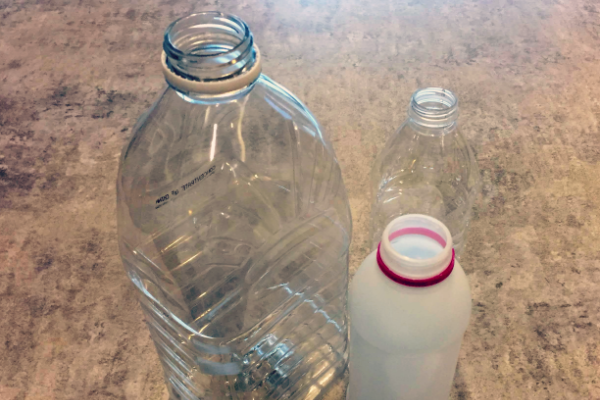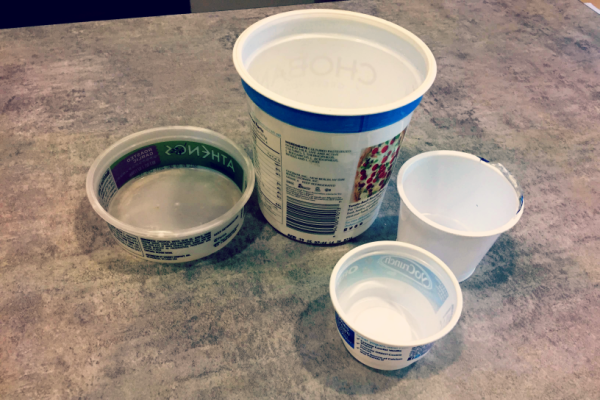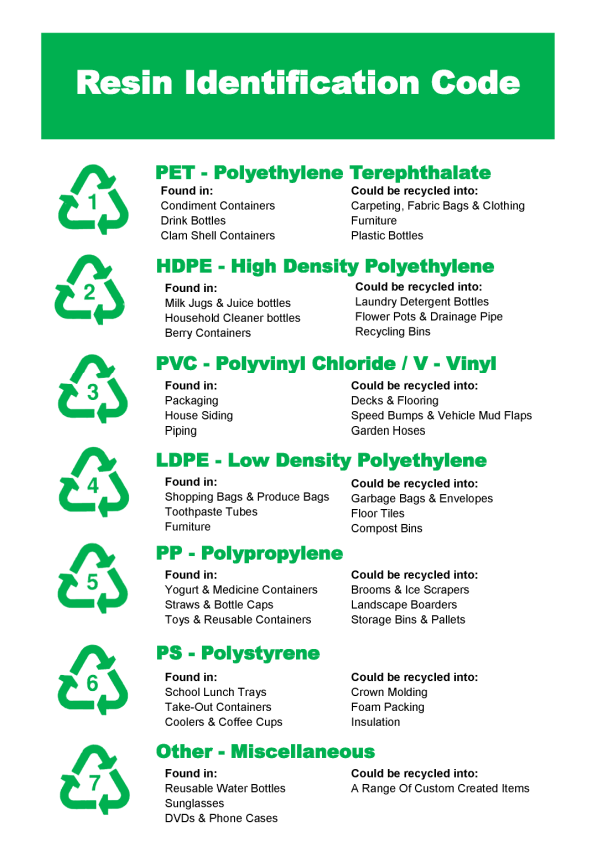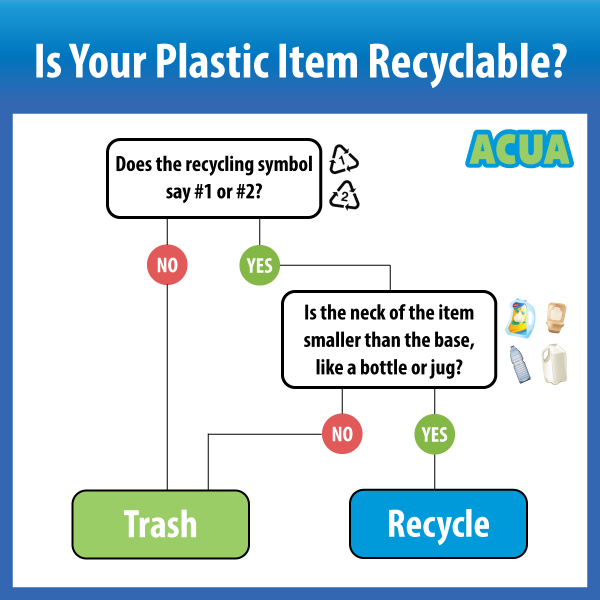Nov 10, 2020
by Alexis Demitroff, Education and Public Outreach Assistant
If you take a close look at the bottom of plastic containers, you will find the recycling symbol with a number printed inside. The recycling symbol and corresponding number is a tool to help identify the type of plastic the item is made of also known as its resin-identification code.
While the recycling symbol does indicate an item can be recycled, it does not always mean that item is accepted in your local recycling program. It's important to check with your local program prior to recycling at home, work or at school.
Local recycling guidelines are determined by the capability of the processing facility where the material is sent to as well as the type of material desired by the local recycling market (a.k.a. those purchasing the item to turn it into something new).
Most low-quality plastics are difficult to turn into new products, so there is not a strong market for them. Higher-quality plastics are easier to work with and can be recycled more easily into new things. Generally, the lower the number on a plastic item, the higher quality the plastic.
The following guide for Atlantic County residents will help you determine what plastics should be placed in your curbside recycling bin, what plastic items should be disposed of as trash, and ways to recycle more plastic.
What Plastic Items Should Go in Your Curbside Bin in Atlantic County?

Currently, ACUA only accepts #1 and #2 plastics shaped like bottles and jugs in its curbside recycling program.
#1 PET / PETE
Polyethylene Terephthalate
PET is commonly found in condiment containers, and drink bottles. This type of plastic can be recycled into plastic carpeting, furniture, fabric bags and fabric clothing.
#2 HDPE
High Density Polyethylene
HDPE is used for juice bottles, milk jugs, household cleaner bottles, tubs of butter, and berry containers. Once recycled, it can turn into laundry detergent bottles, benches, pens, and drainage pipe.
Put #1 and #2 plastics shaped like bottles or jugs (with necks smaller than the base) in your recycling bin! These are sturdier, higher-quality plastics. Please remove and trash the caps!
What Plastic Items Should NOT Go in Your Curbside Bin?

#3 PVC / V
Polyvinyl Chloride / Vinyl
PVC is found in some packaging, house siding, and piping. Recycled PVC can be used to create decks, vehicle mud flaps, flooring and speed bumps.
This material is difficult to process and separate due to irregular sizes and shapes. It is also a low-quality plastic and contains chlorine, which requires special environmental precautions when melting.
#4 LDPE
Low Density Polyethylene
LDPE is found in shopping bags, tote bags, produce bags, some furniture, and toothpaste tubes. It could turn into trash bags, compost bins, floor tile and envelopes.
This material is difficult to process and separate due to irregular sizes and shapes. It is also a low-quality plastic.
.png)
#5 PP
Polypropylene
PP is found in yogurt containers, bottle caps, plastic straws, toys, and medicine bottles. Recycled PP and could to turn into brooms, ice scrapers, landscape boarders, storage bins and pallets.
This material is difficult to process and separate due to irregular sizes and shapes. It is also a low-quality plastic.
#6 PS
Polystyrene
PS is found in school lunch trays, ice cream cups, egg cartons, take-out containers, coolers, coffee cups and packing peanuts. Foam has the ability to create crown molding for buildings, foam packing and insulation.
This material is difficult to process due to light-weight nature and ability to easily crumble.
.png)
#7 OTHER
“Other” plastic can be found in sunglasses, DVDs, computer and phone cases, nylon, and *bioplastics.
This material is difficult to process due to irregular size, shape and composition.
*Note on bioplastics: Traditional plastic is made from oil, but bioplastics come from natural sources like corn, sugar, rice, and tapioca that are synthesized and processed to form a material that looks and feels like plastic. This type of material can get tangled or even start decomposing in the recycling center – which can cause big problems.
Usually, proper disposal of bioplastics requires the material to be dis-posed of at an industrial composting facility where the product is ground up and temperatures get hot, which allows a specialized type of bacteria to fully break down this material. Additionally, there is a range of bioplastic compositions, which can each require different composting conditions to thoroughly decompose with varying degrees of light, heat, or temperature.

Ways to Do More
The United States is the largest producer of plastic waste. To help reduce the negative impact of plastics on the planet, you can re-duce your purchases, opt for plastic packaging that you know can be recycled in your local program, look for packaging made out of re-cycled materials, or buy in bulk.
Many local grocery stores have drop-off bins for recycling plastic bags and film. These drop-off bins accept plastic bags, bubble wrap and other plastic film packaging. When recycled this way, plastic film is often turned into trash bags, compost bins, floor tiles and decking.
To learn more about how to recycle correctly, visit acua.com/recycling101
